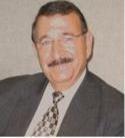
Biography:
Mostafa A. EL-Sayed received his BSc from Ain Shams University, Cairo, Egypt; PhD from Florida State University; Postdoctoral Fellow from Yale University, Harvard University and the California Institute of Technology. He was a faculty member in the Department of Chemistry and Biochemistry at UCLA (1961-94) and the Julius Brown Chair and Regents Professor Department of Chemistry and Biochemistry at Georgia Institute of Technology (1994-present).
Professor El-Sayed is an Elected Member of the US National Academy of Sciences (1980), an Elected Fellow of the American Academy of Arts and Sciences (1986), an Elected Associate Member of the Third World Academy of Sciences (1984); an Inaugural Fellow of the American Chemical Society, the American Physical Society, the American Association for the Advancement of Sciences. He is an elected Honorary Fellow of the Journals of the Indian and the Chinese Chemical Societies.
He received the King Faisal International Prize in the Sciences, and honorary doctoral degrees from the Faculties of Medicine of both Universities of Mansoura and Alexandria in Egypt. He has received a number of national awards such as the Fresenius, the Tolman, the Richard, the Lindeman and the Seaborg Medals; as well as other numerous local American Chemical Society sectional awards. In 2002, he received the ACS-APS Langmuir National Award in Chemical Physics, and in 2007 he was the Georgia Institute of Technology distinguished Professor of the year; the Fairchild Professor at Caltech and Visiting Miller Professor at UC Berkeley. Professor El-Sayed received the 2007 USA National Medal of Science from the President of the United States in 2008; and in 2009 he received the Medal of the Egyptian Republic of the First Class from the President of Egypt.
Abstract:
Ever since the Stone Age, man has always been trying to find new materials with properties that better his health, life and defense. Mining the Earth and extracting chemicals from plants were the two means used for a long time to search for new materials'. until the age of technology (which began less than one hundred years ago). This is when we were able to create new chemicals and materials in the laboratory by doing scientific research!
Thus, research helped create NEW materials which have properties that can better our daily lives. Because these new materials also expand our industry, new jobs are created and more taxes are collected by the government. This enhances the national economy, thus, providing funds for more research to discover more new useful materials (for every one dollar, the USA government spends on material research, it gets, 5 USD back in return!).
NANO-SCIENCE is the new science that makes many new materials from different new properties of any existing material we have around us by simply using it in a very small size: The Nano-Meter Size (the width of one hair is 50,000 nano-meters). Nano-Technology makes use of some properties found in some of these very small materials. The scientific reason for this change in the property of materials of nano-meter size will be explained, and some of the new applications or potential applications in the fields of optics, catalysis and medicine will be discussed.